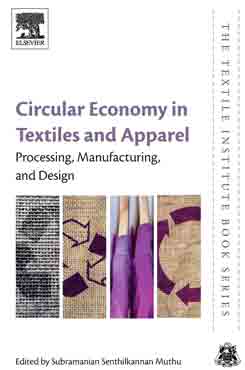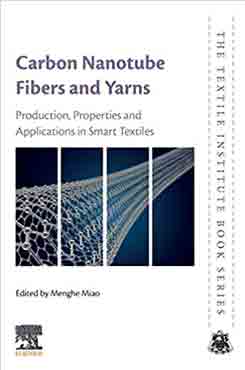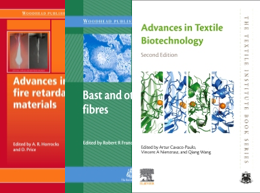Description
Plant Fibers, their Composites, and Applications provides a systematic and comprehensive account of recent research into plant fibers, including the synthesis of plant fiber reinforced polymer composites, characterization techniques, and a broad spectrum of applications. Plant fibers have generated great interest among material scientists due to their characteristics, which include availability, low cost, biodegradability, easy processability, excellent thermo-mechanical properties, low acoustic properties. They have been proven to be excellent replacements for synthetic fibers and have found applications in advanced polymer composites.
Coverage includes every stage of working with plant fibers, including synthesis, processing, characterization, applications, recycling, and life cycle assessment of plant fibers and their composites. Drawing on work from leading researchers in industry, academia, government and private research institutions across the globe, this is a definitive one-stop reference for anyone working with plant fibers.
Key Features
- Addresses emerging applications of plant fiber reinforced polymer composites in automotive, aerospace and construction and building applications
- Provides detailed coverage of the modern processing technologies and synthesis for plant fibers and their composites
- Includes valuable technical information relating to a range of new and nonconventional plant fibers
Readership
Table of Contents
- Chapter 1 Introduction to plant fibers and their composites
- 1.1 Overview of plant fibers and its composites
- Conclusion
- References
- Chapter 2 Extraction and modification of natural plant fibers—A comprehensive review
- 2.1 Introduction
- 2.2 Fiber extraction methods/techniques
- 2.3 Extraction procedures for various plant fibers
- 2.4 Influence of extraction methods on fiber properties
- 2.5 Raw fiber characterization and their drawbacks
- 2.6 Modification of natural fibers
- 2.7 Effects of fiber modification on various fibers
- Conclusion
- References
- Chapter 3 Alfa fibers, their composites and applications
- 3.1 Introduction and background
- 3.2 Alfa fibers and its derivatives
- 3.3 Alfa fibers based polymer composites
- 3.4 Application of alfa fibers composites
- Conclusions and future trends
- References
- Chapter 4 Areca sheath fibers, their composites and applications
- 4.1 Introduction
- 4.2 Materials and methods
- 4.3 Results and discussions
- 4.4 Potential applications of areca fiber composites
- Conclusions
- Acknowledgments
- Funding information
- References
- Chapter 5 Bagasse fibers, their composites and applications
- 5.1 Introduction
- 5.2 Surface treatment of Bagasse fiber
- 5.3 Fabrication techniques for Baggse fiber based composites
- 5.4 Bagasse fiber based composites
- 5.5 Applications of bagasse fiber based composites
- Conclusion
- References
- Chapter 6 Bamboo fibers, their composites and applications
- 6.1 Introduction
- 6.2 Types of bamboo
- 6.3 Extraction, composition, and properties of bamboo fiber
- 6.4 Fabrication process of bamboo fiber reinforced composites
- 6.5 Properties of bamboo fiber reinforced thermoset composites
- 6.6 Properties of bamboo fiber reinforced thermoplastics composites
- 6.7 Properties of bamboo fiber with biodegradable polymer
- 6.8 Properties of bamboo nanocomposites
- 6.9 Applications of bamboo, bamboo fiber, & reinforced composites
- Conclusions
- References
- Chapter 7 Banana fibers, their composites and applications
- 7.1 Introduction
- 7.2 Banana fiber
- 7.3 Banana fiber reinforced composites
- Conclusion
- References
- Chapter 8 Coconut/coir fibers, their composites and applications
- 8.1 Introduction
- 8.2 Coconut/coir tree and fruit, fiber extraction and application
- 8.3 Composites
- 8.4 Application of coir fiber based composites
- Conclusion
- References
- Chapter 9 Flax fibers, their composites and application
- 9.1 Introduction
- 9.2 Flax fibers
- 9.3 Moisture sensitivity
- 9.4 Flax fiber reinforced polymer composites
- 9.5 Applications of flax fiber composites
- Conclusion
- References
- Chapter 10 Hemp fibers, their composites and applications
- 10.1 Introduction
- 10.2 Hemp fibers
- 10.3 Fabrication methods
- 10.4 Properties
- Conclusion
- References
- Chapter 11 Jute fibers, their composites and applications
- 11.1 Introduction
- 11.2 Preparation of jute fiber composites
- 11.3 Mechanical properties
- 11.4 Dynamics properties
- 11.5 Thermal stability
- 11.6 Water absorption
- 11.7 Application of jute fiber composites
- Conclusion
- References
- Chapter 12 Kenaf fibers, their composites and applications
- 12.1 Introduction
- 12.2 Extraction of fibers
- 12.3 Properties of fibers
- 12.4 Surface modification of Kenaf fibers
- 12.5 Reinforcement in composites
- 12.6 Hybrid composite
- 12.7 Manufacturing of composite
- 12.8 Properties of composite
- 12.9 Applications of composite
- Conclusions
- References
- Chapter 13 Thermal and mechanical characterization of composite building material based on clay and date palm fibers
- 13.1 Introduction
- 13.2 Used basic building materials
- 13.3 Thermal characterization techniques
- 13.4 Study of mechanical behavior
- 13.5 Results and discussion
- 13.6 Measurement of mechanical properties
- Conclusion
- References
- Chapter 14 Pineapple fibers, their composites and applications
- 14.1 Introduction: The productive system of pineapple and the role of fibers
- 14.2 Characteristics of pineapple leaf fibers
- 14.3 Pineapple fiber (PALF) composites
- 14.4 Palf composites: production and characterization
- 14.5 Applications for palf composites
- Conclusions
- References
- Chapter 15 Stalk fibers (rice, wheat, barley, etc.) composites and applications
- 15.1 Introduction
- 15.2 Rice stalk fibers
- 15.3 Wheat stalk fibers
- 15.4 Corn stalk fibers
- 15.5 Cotton stalk fiber
- 15.6 Rapeseed stalk fibers
- 15.7 Sorghum stalk fibers
- 15.8 Barley stalk fibers
- 15.9 Oat stalk fibers
- Conclusions
- Acknowledgment
- Conflicts of interest
- References
- Chapter 16 Ramie fibers, their composites and applications
- 16.1 Introduction
- 16.2 Nature of ramie fibers
- 16.3 Categories and processing of ramie fiber composites
- 16.4 Applications of ramie fiber composites
- Conclusions and perspectives
- References
- Chapter 17 Cotton fibers, their composites and applications
- 17.1 Introduction
- 17.2 Chemical composition and structure
- 17.3 Physical and chemical properties of cotton
- 17.4 Polyester/cotton fiber
- 17.5 Cotton PLA composites
- 17.6 Cotton polyethylene composites
- 17.7 Cotton PVC composites
- 17.8 Other cotton composites
- Conclusion
- Acknowledgments
- References
- Chapter 18 Wood fibers, their composites and applications
- 18.1 Introduction
- 18.2 Natural fibers: Various types and its properties
- 18.3 Flax fiber: Its origin, structure and composition
- 18.4 Environmental impacts of flax fibers
- 18.5 Epoxy polymer
- 18.6 Manufacturing methods of natural fiber composites
- 18.7 Mechanical properties of natural fiber composites
- 18.8 Dynamic mechanical analysis
- 18.9 Thermal properties
- 18.10 Water absorption studies
- 18.11 Matrix and fiber modification methods
- 18.12 Applications
- Conclusions
- References
- Chapter 19 Novel plant, their composites and applications
- 19.1 Introduction
- 19.2 Conventional plant fibers and their uses
- 19.3 Novel natural plant fibers and their characteristics
- 19.4 Plant fiber-based composites
- 19.5 Applications of potential natural fiber composites
- Conclusion
- References
- Chapter 19 Life cycle assessment of plant fibers and their composites
- 20.1 Introduction
- 20.2 Life cycle assessment methodology
- 20.3 Life cycle assessment of plant fiber composites
- Conclusions
- References
- Inde












